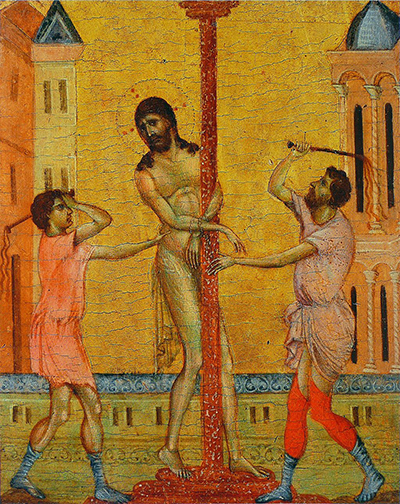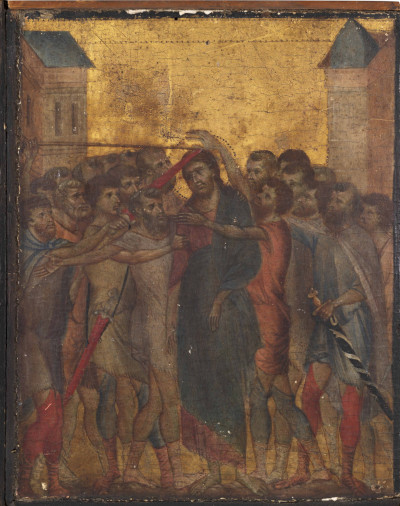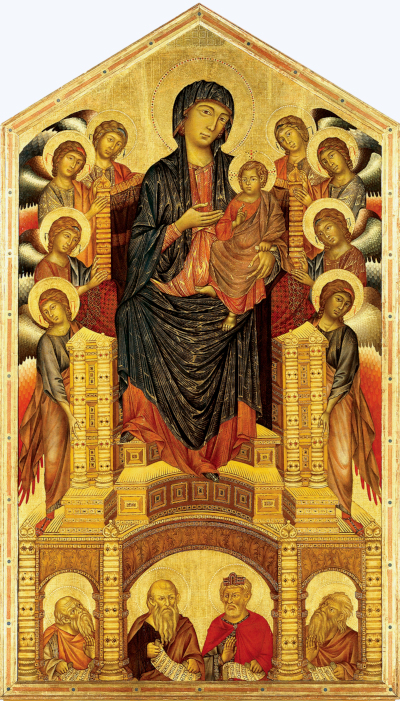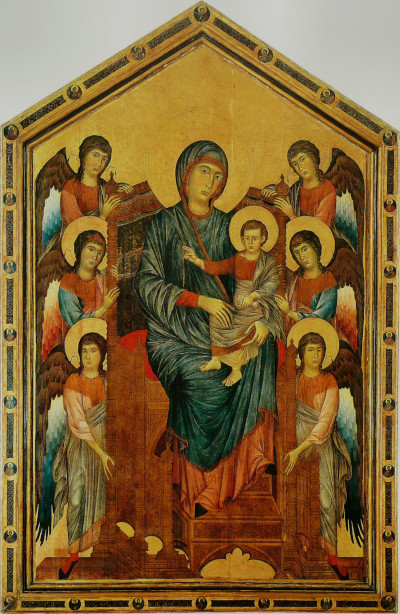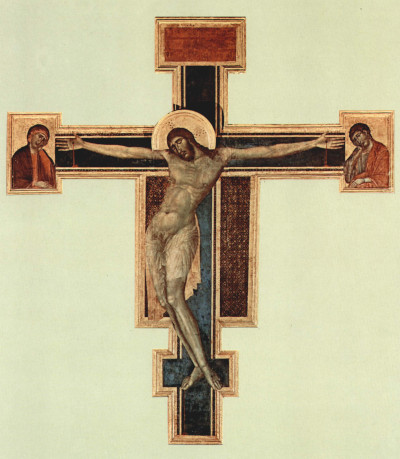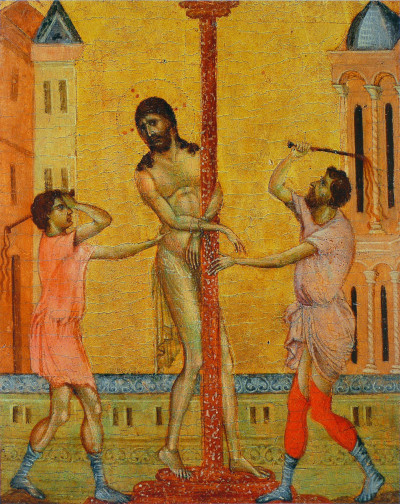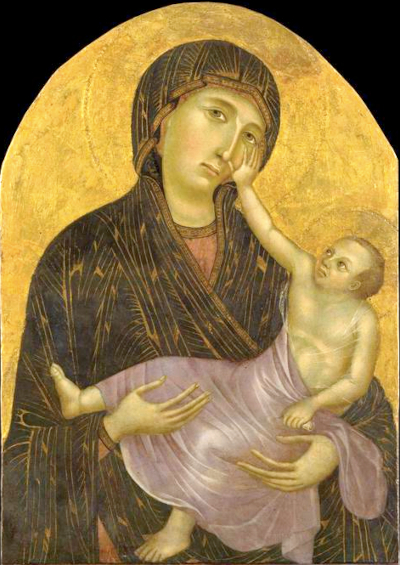Cimabue was a Florentine painter from the 13th century who left behind some important stylistic developments that would help to move us towards the Italian Renaissance the followed soon afterwards.
Groundbreaking Work
The style used by Cimabue within his portraits was more subtle than previously seen, where a more accurate likeness to reality was now being used. The artist would display a more intricate understanding of form that allowed his figures to truly appear lifelike.
He continued to use the flat perspective style of this period but his advancements in portraiture, aided by other developments elsewhere in Italy, provided the groundwork for our transition from medieval art towards the grandness of the Renaissance era. Added to that, Cimabue also tutored a number of other significant artists who would also have an impact in this way, most notably Giotto di Bondone (as claimed by Giorgio Vasari), although that is questioned by some academics.
The style found within Byzantine art had long since influenced Italian artists and although we find many of these elements within Cimabue's work, there are new ideas being used which would have been entirely of his own doing. It is not surprising, therefore, to find the most of his early tutors would have been from the Byzantine backround, and that he chose initially to follow in that same style.
Artistic Evolution
Perhaps, as he grew in confidence, a more personal style was developed, which has been the case for most famous artists in their early years. The earliest example of this new direction is dated at 1270 and that marked a significant moment in art history - it was specifically a beautiful depiction of the Crucifixion in San Domenico Church in Arezzo, which lies in modern day Tuscany. The piece was completed in distemper and gold on wood panel and hangs from the ceiling.
From that point onwards the artist would take on commissions right across Tuscany, including his native Florence, plus Arezzo, Pisa and Vespignano. He would also go further afield, on occasion, such as the commissions that he completed in Rome. Up until his eclipising by Giotto di Bondone, he was truly famous and held in high regard within Florence and beyond. An unconfirmed story tells us of how he took Giotto under his wing after a chance meeting when his student was just ten years old.
Influence
Whether true or not, Giotto would take the advancements of the Florentine master and incorporate his own ideas as we moved yet closer to the Renaissance era. During this period artists were particularly localised in their work, with travels outside the boundaries of their particular kingdom being fairly rare. Politics were also heavily involved in the awarding of commissions and so it was essential that any artist nurtured any patrons in his local region, as otherwise work potentially could dry up completely.
Whilst influencing a large number of artists within this region of Italy, there were several specific names who are worthy of note. Besides the brilliance of Giotto, we should also remember Duccio, another highly regarded painter who made use of Cimabue's achievements within his own career. Specifically, his Rucellai Madonna, now to be found at the Uffizi Gallery in Florence, was unveiled in 1286, which was around fifteen years or so after Cimabue had started to work in this new direction.
Details around famous artists would take longer to spread during that period, because of the lack of the modern media that we have today. Discussions would have been had within artists' studios whilst each would also visit each other from time to time in order to collaboratively exchange ideas on painting styles and specific technical advice. The tutor/student relationships would also build connections that might draw different artistic communities together over time.
"..Cimabue was, in one sense, the principal cause of the renewal of painting. Giotto truly eclipsed Cimabue's fame just as a great light eclipses a much smaller one..."
Giorgio Vasari
Famous Paintings by Cimabue
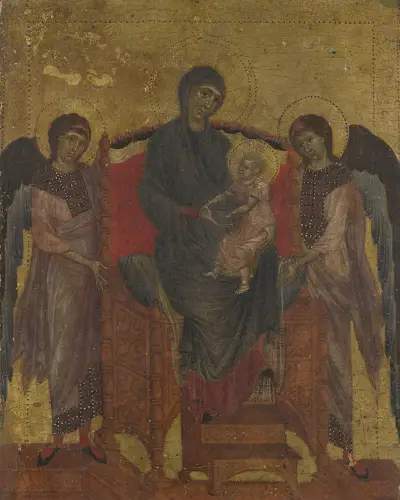
Virgin and Child with Two Angels
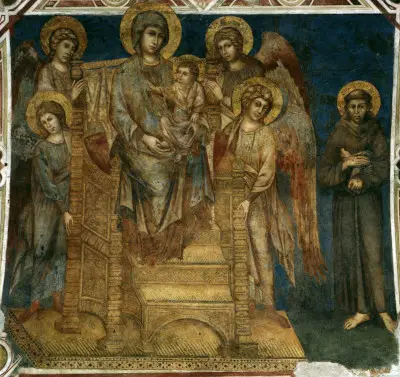
Madonna Enthroned with the Child, St Francis and Four Angels
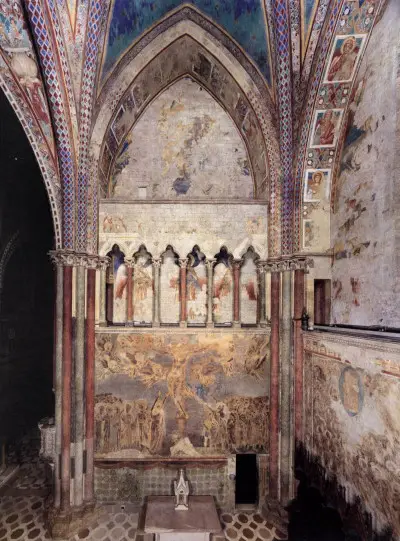
View of the Frescoes in the Left Transept
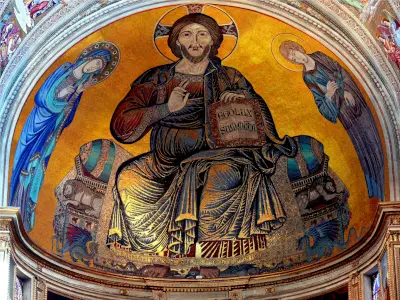
Christ Enthroned with the Virgin and St John
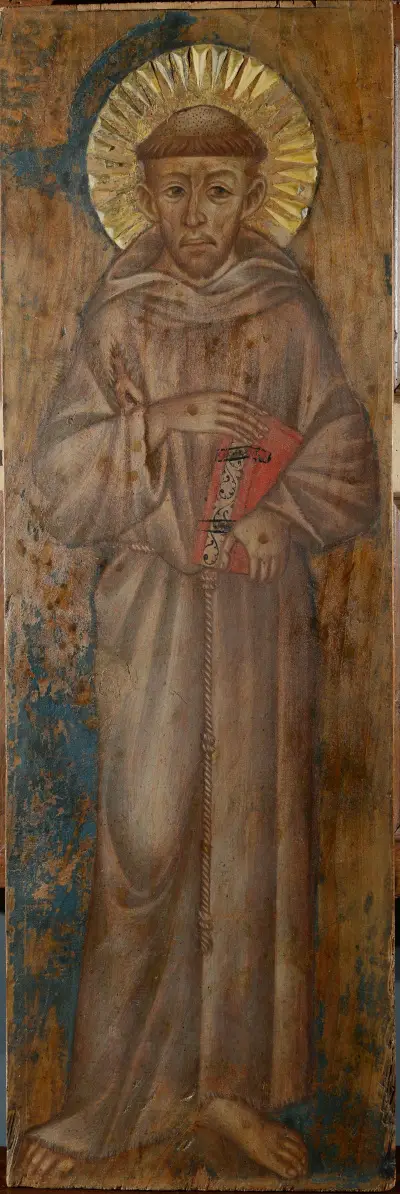
Saint Francis
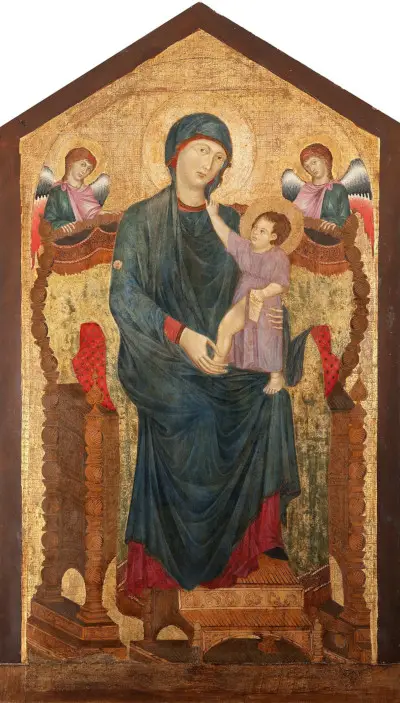
Maestà of Santa Maria dei Servi
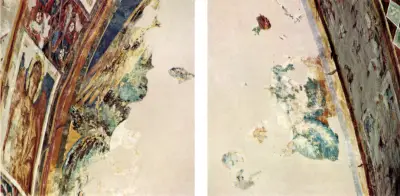
Fragment of Angels
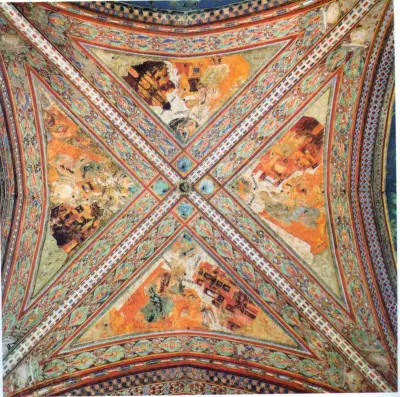
Vault of the Evangelists
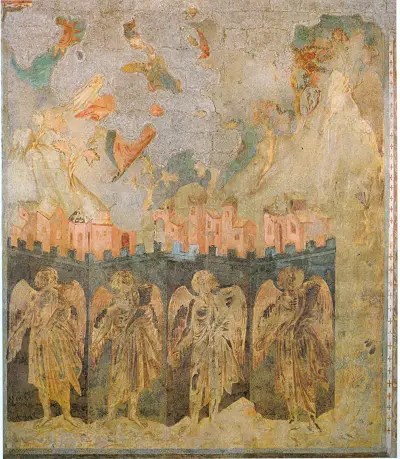
Vision of Angels at the Four Corners of the Earth
Enviable Reputation
Once he had established himself as a notable artist, the commissions continued to flood in, right up to his passing in 1302. As his students also established themselves, he would start to draw in some ideas from them which allowed his style to develop continuously and stay in touch with the changing mood of Italian art. Despite being notoriously grumpy and dismissive of criticism (hence his nickname of "Cimabue", or "Bull head"), he did acknowledge the benefit of studying other artists, even those who had had taught himself.
Giotto is believed to have left a lasting impression on his later years of work and encouraged him to produce even more delicate portraits, a characterstic that he had always been famous for. In his later years all of Cimabue's commissions were to be displayed within places of worship, including the Maestà of Santa Trinita in Florence, from around 1290 and also the earlier decorative pieces within the Upper Basilica of Assisi. Close to his death, Cimabue completed a number of mosaic pieces in Pisa, the city in which he lived for the last years of his life.
Covered Paintings and Mosaics
Cimabue himself was highly skilled in producing some stunning mosaics during his career but these have tended to be forgotten as compared to his paintings. There was a large mosaic of Christ Enthroned between the Virgin and St John the Evangelist that was installed in the Duomo in Pisa that is perhaps his most famous contribution to this medium. He likely would have produced many more than this, but there is a lack of documentation around that.
Many of his artworks in all mediums have been lost due to wear and tear over time, and in other cases they have been misattributed to others, before later being corrected. Some of the brighter colours used by the artist in his paintings have aged particularly badly, with the impact of centuries-long oxidation never having been considered at the time that they were completed. Modern artists have the benefit of being able to use materials that should better last the years ahead.
Work as a Draughtsman
We understand from historical records that Cimabue spent much of his youth practicising his talents as a draughtsman, endlessly drawing all manner of different figures in order to perfect his ability to accurately depict the natural look of whatever he was viewing at the time. This showed immediately that he would be an artist who would develop his historical understanding of painting in parallel with satisfying a strong imagination.
He respected and learnt from tutors who themselves were firmly in the camp of traditional Byzantine art, but also had enough independance of mind that he would consider ways in which his own personal touch could be implemented within it. In most cases, tutors will offer historical methods that the younger generations will seek to modernise or develop with their own artistic inspration. We also know that Cimabue was a hard working individual who understood that his natural abilities needed to be honed over the decades of his career, and that he could not simply rely on his early promise.
Legacy
One element to his career that has undeniably damaged his legacy somewhat would have to be the atmosphere of uncertainty that has existed around Cimabue's career for many centuries. We have just a few artworks left from his career, with most having been destroyed or damaged beyond repair over the centuries that have passed since they were first revealed to the world. We also have a scenario where many of his artworks have never actually been correctly attributed to the artist, with several even in the past few years being discovered and attributed to him for the very first time.
This denies us the opportunity to easily admire his work in person, which then makes it harder to modern curators to promote his legacy through the type of exhibitions that have kept other artists from around this period very much in our minds. Even in death, a certain amount of promotion is required to avoid major artists being forgotten amongst the public, even though academics will still be well aware of their critical achievements. Thankfully, the amount of attention that remains focused on the Italian Renaissance ensures that the leading figures in the build up to it will always be seen as significant in their own right.



